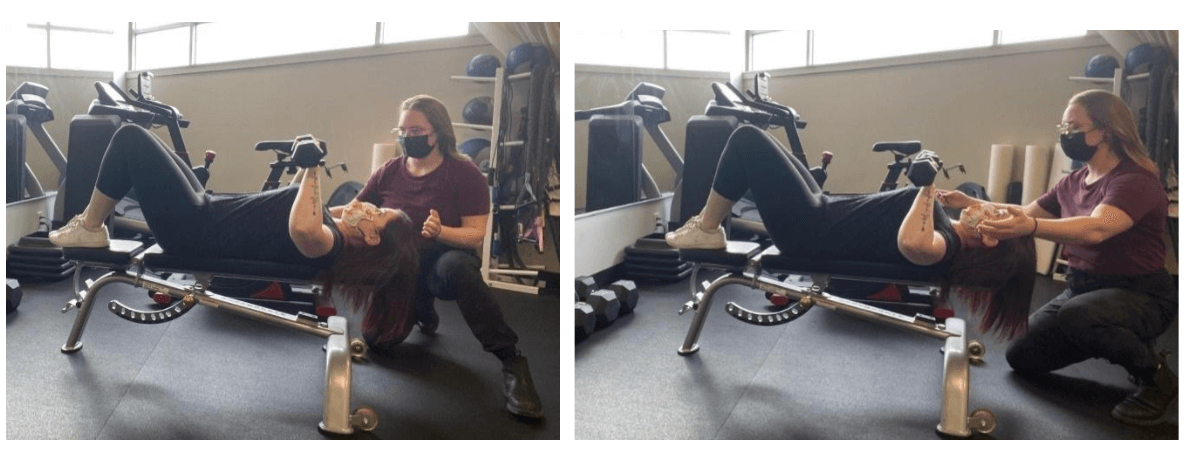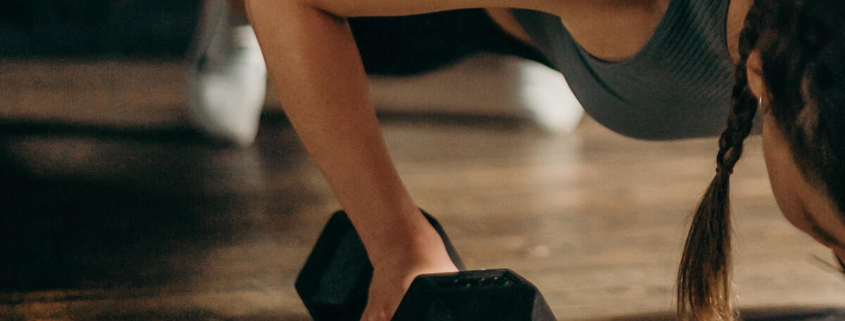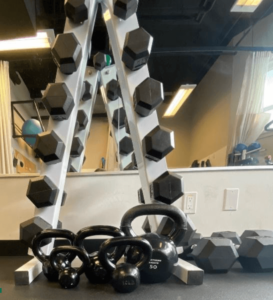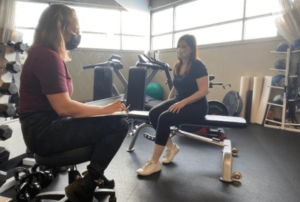Yes! Personal training is for everyone! At Diversified Health Clinic, our Personal Trainer and Certified Kinesiologist, Angelina Schaaf, works with individuals at all levels and different goals to help you achieve your best self. With our private gym space, Angelina will work one-on-one with you on strength training, cardio training, mobility, or whatever your own personal goals may be.
What Personal Training Can Assist With
- Helping you lose weight
- Learn new skills
- Train for sports
- Rehab of an injury
- Strength training
- How to safely perform exercises
- Improve balance and mobility
There’s a difference between being fit versus being active. No one, not even elite athletes, is born knowing which specific exercises their bodies will respond most favourably to — let alone how to design a complete program that can deliver results within a realistic schedule. Different people have different needs and priorities, and because of this, fitness has never been a one-size-fits-all endeavour. A personal trainer takes the guesswork out of how to obtain your fitness goals by custom-designing an action plan for you (from beginner to advanced), taking into account your personal fitness status now versus your personal fitness goals.
A Personal Trainer Can Help You Start With the Basics
- Suggesting activities that will work for your body, schedule, and available equipment
- Showing you how to choose exercises, weights, reps and sets
- Help teach you how to get the most out of your workouts
- Help you to figure out how hard to work and how to monitor your intensity
Even if you are a more experienced exerciser, a personal trainer can be the element that takes your workouts to a whole new level, by:
- Providing a fresh perspective and identifying key areas in your current exercise program that could be adjusted to increase the intensity, effectiveness and fun
- Challenging you and helping you push harder through plateaus safely and with good form
- Generating new ideas and uses for the fitness equipment you have access to
We believe everyone benefits from living a more active and healthier lifestyle, and we work with individuals of all fitness levels and ages. In addition, we can work with your schedule to provide you with a customized workout plan to meet your goals.
Suffering from Chronic Health Problems?

For most chronic health problems, exercise can often help people manage the condition and reduce symptoms. For example, chronic conditions that cause pain or other aggravating symptoms may make you less inclined to exercise. However, movement and strengthening specific parts of the body may help alleviate those symptoms in the long run. For example, people with different types of arthritis benefit from learning how to increase strength and joint stability while remaining mindful not to cause further damage to cartilage and joints.
A significant role of personal trainers is to help reduce the risk of injury, regardless of who they are working with or what training they are providing. Acute and overuse injuries commonly occur when people follow a one-size-fits-all program that is not tailored to their needs. Personal trainers are experts in human physiology who tailor specific exercises to people’s varying physical abilities and limitations.
What Are the Mental Health Benefits?
Exercise is beneficial for everyone’s mental health, whether you suffer from a diagnosis or not. Exercise promotes all kinds of positive changes in the brain, including releasing endorphins, which are powerful chemicals that energize your spirit and make you feel good. In addition, exercising can help to relax muscles, relieve tension, and boost the release of dopamine, norepinephrine, and serotonin, which affect mood, focus, and attention. Other mental health benefits include:
- Sharper memory and thinking
- Higher self-esteem
- Better sleep
- More energy
- Stronger resilience
- Uplifted mood
What You Can Expect at Your Appointments
During your first visit:
A complete health assessment will be taken to understand where you currently are, what you would like to improve on, and any injuries or issues you are currently experiencing. Next, we will do a physical assessment to get a baseline of where you are to create a customized training program for you.
During subsequent appointments:
We will work one-on-one with you through your customized training program in our private gym space. Angelina will focus on ensuring that you have the correct posture, form, and ability so she can modify any exercises as needed.
Ready to Take the Next Step?
Contact the clinic for more information on Personal Training or to book with Angelina Schaaf. Call us at 250-382-0018 or book your appointment online today!
#personaltraining #fitness #victoriabc #kinesiology #physiotherapy #gym #healthandwellness #training #mobility #strengthtraining #loseweight #rehabexercise #stressmanagement #stronger #self-esteem






 Delayed onset muscle soreness is more pronounced when:
Delayed onset muscle soreness is more pronounced when:
